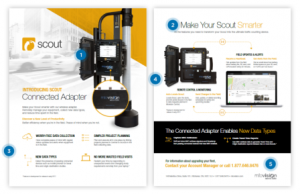There’s no denying it. Emojis bring to text the nuances of face-to-face communication that would otherwise go undetected or misinterpreted. You use them to write with subtle sarcasm or soften what would otherwise sound like a curt message. Overslept and missed your deadline? Celebrating a huge win like a product launch with your remote team? Only a set of hand emojis like these will do .
We figured many of your Slack channels, text messages and Twitter feeds might look like this, but what about the more traditional channel of workplace communication? Curious to see how these icons have been adapted into the work inbox, we asked 500 professionals across the U.S. about how they use emojis when emailing teammates. We were quite surprised by our findings.
Women are more likely to be emoji power users
Above all else, the biggest split in usage was between genders. 50 percent of women said they are more likely to send an email with emojis after receiving one first. While men were more likely to say that it’s never appropriate to include an emoji in work related email.

We decided to do some secondary research of our own and it seems that science hints at this as well. Studies show that males process less of the bonding chemical oxytocin than females. This hints that women more readily build close relationships in the workplace. Also, females tend to have verbal centers on both sides of the brain, where males are likely to only have one on the left side of the brain. This might be why we also found a significant amount of women responded they were more likely to use emojis to communicate emotional tone sometimes.
Millennials look for social proof
For how much time millennials are spending on their phones – 14.5 hours a day – Gen Y doesn’t use emojis in work email as much we’d expect. Afterall, beyond consumer brands catching on with the trend, we’ve seen major institutions shifting their strategy to speak to millennials through visually driven mediums. The White House recently released an emoji-heavy report, Goldman Sachs also announced its Millennial spending habits report using a string of emojis. Younger tech users are fluent in emoji and some are going as far as to suggest that it’s the start of a new language.

With all this buzz, we’d think millennials seamlessly carry this habit over to work emails, right? Not quite what we saw. While millennials are more likely than their older counterparts to receive work emails with emojis, half of them also shared that they are only more likely to send an email with emojis after receiving one first. It seems as if Gen Y-ers still have their reservations about mixing more casual emoji-lingo into the professional setting. They either look for social confirmation or use emojis amongst close friends at work.
But, the rest of us aren’t buying it
All in all, the rest of us just aren’t sold on using emojis in work email. An overwhelming 88 percent of respondents shared that they feel work emails are less credible when they contain emojis. This was surprisingly a pretty evenly shared sentiment across all industries.

Our advice for using emojis? Don’t be afraid to test the waters. Work your way up with an emoticon ( one of these – :), :P) or follow the crowd and send an emoji to someone you’ve received one from in the past! Emojis can have great value in the workplace once we’re able to establish a fair balance that’s credible yet personal.
What do you think of our findings? How does this compare to your workplace culture? How many emojis (or lack thereof) have you used in your work email today? Let us know in the comments below.
Digital & Social Articles on Business 2 Community(148)
Report Post




